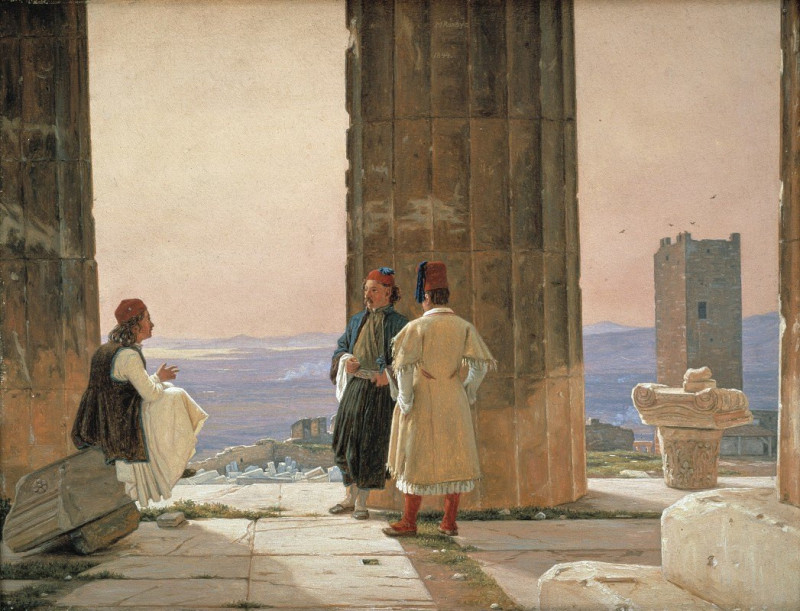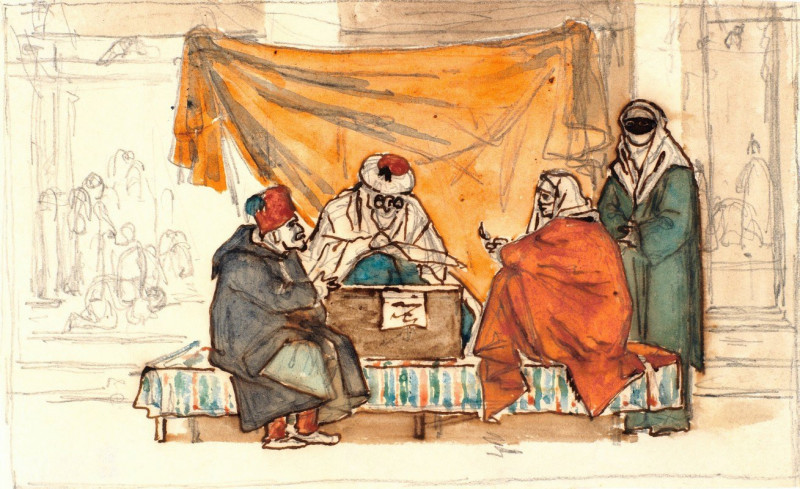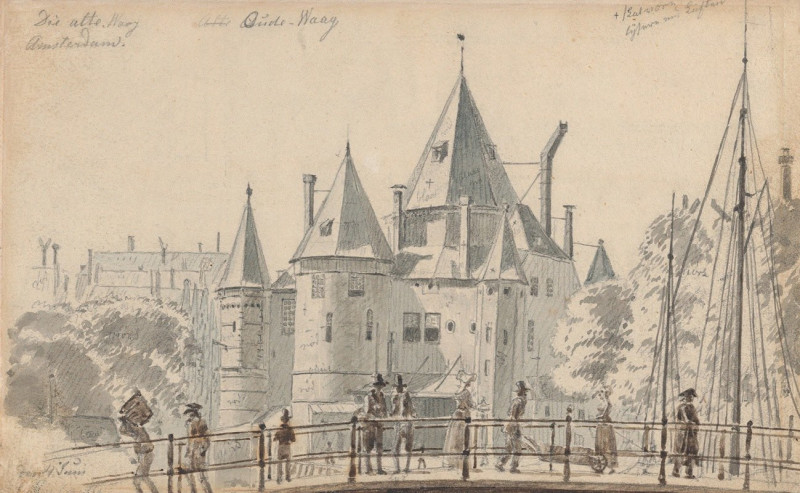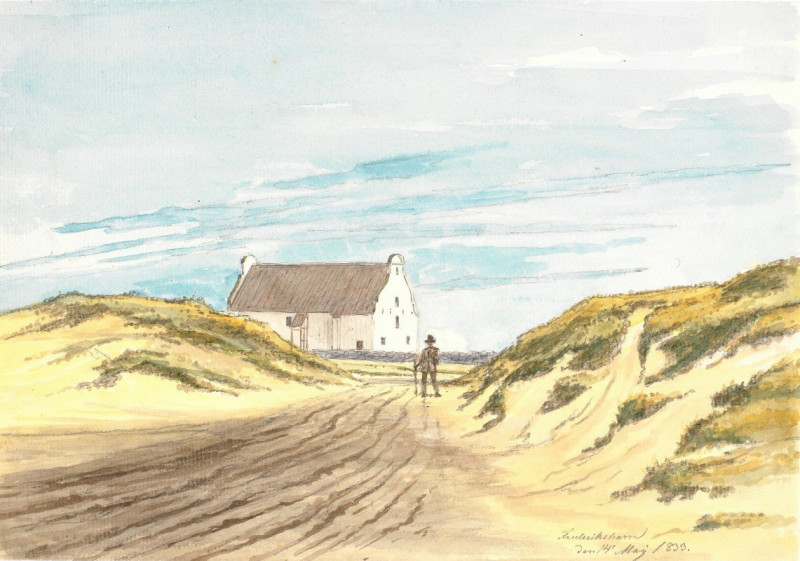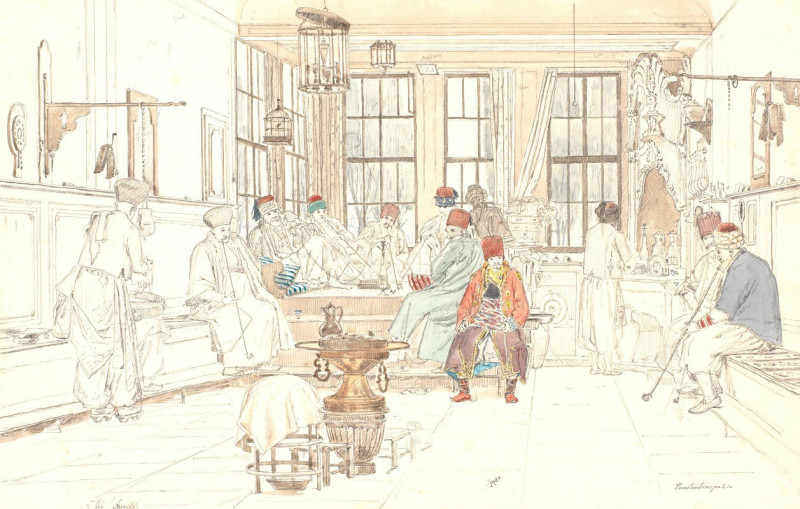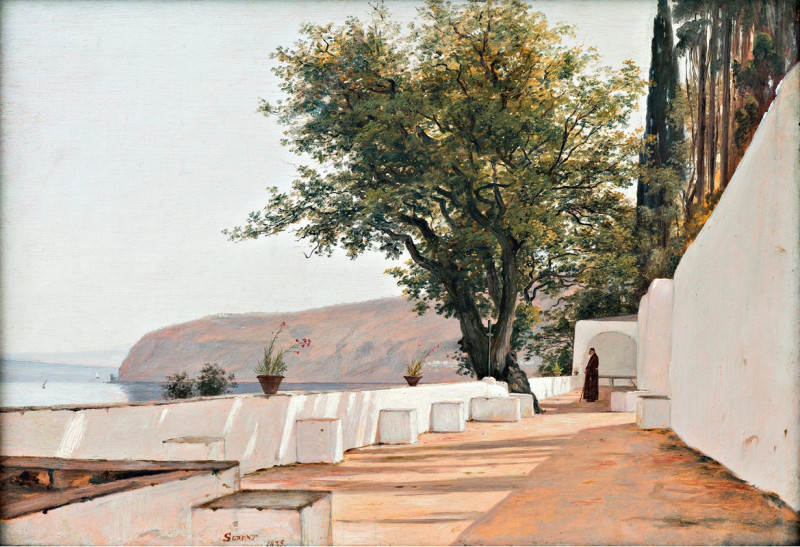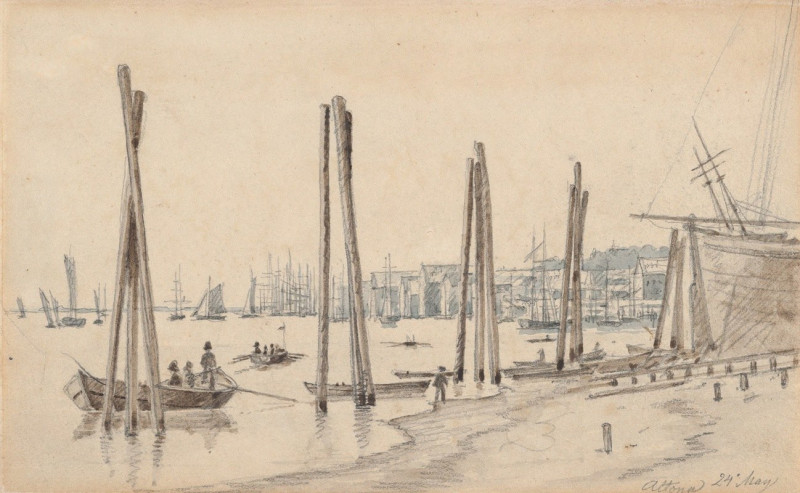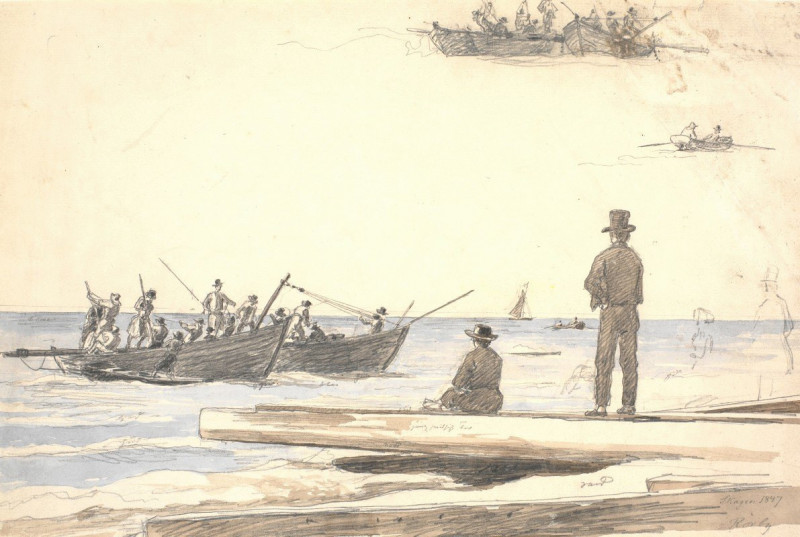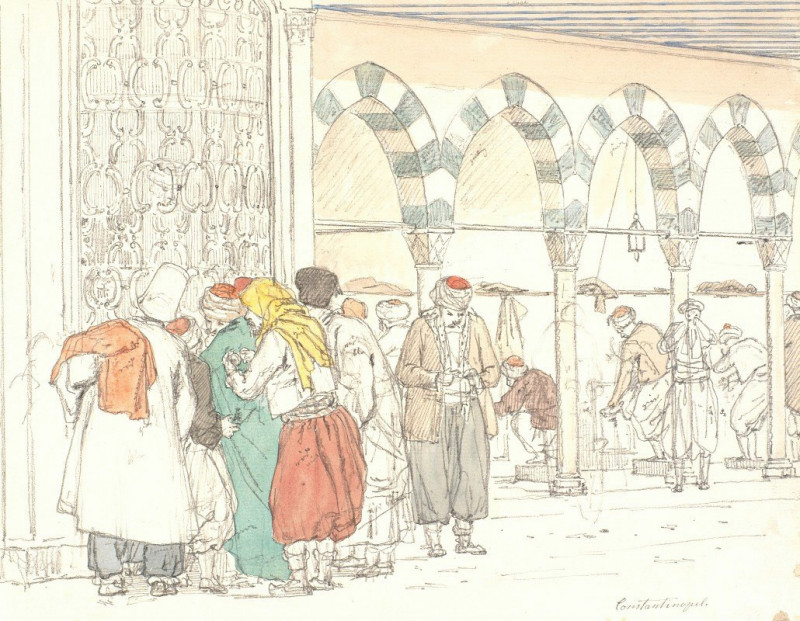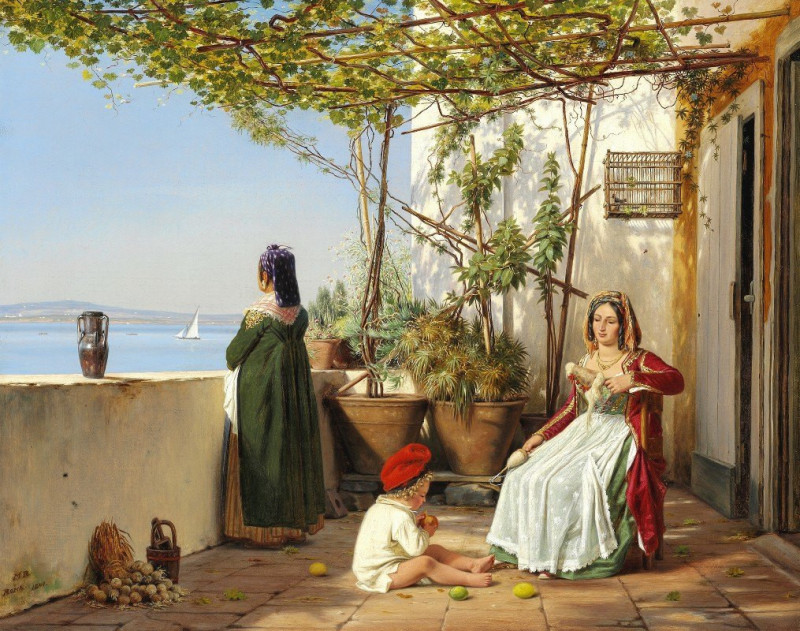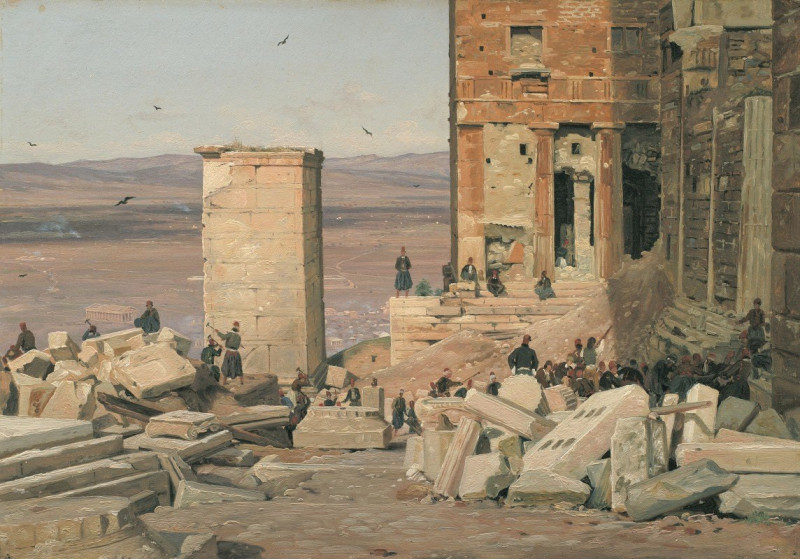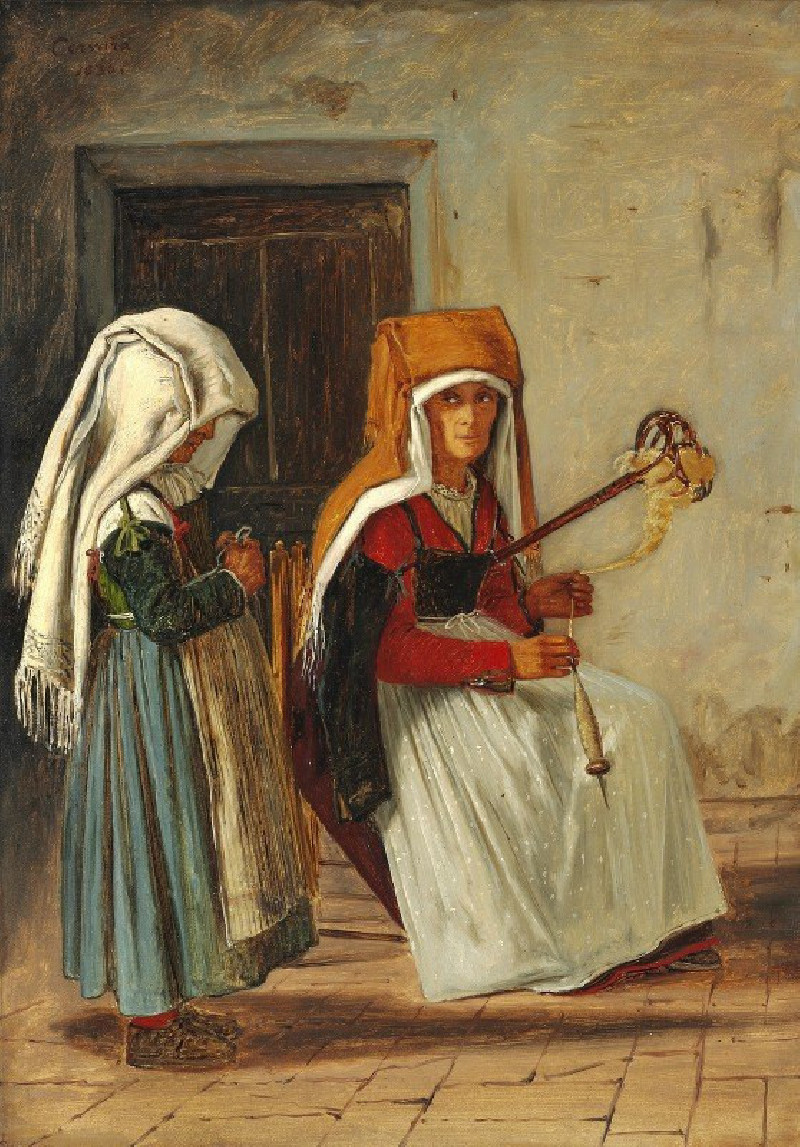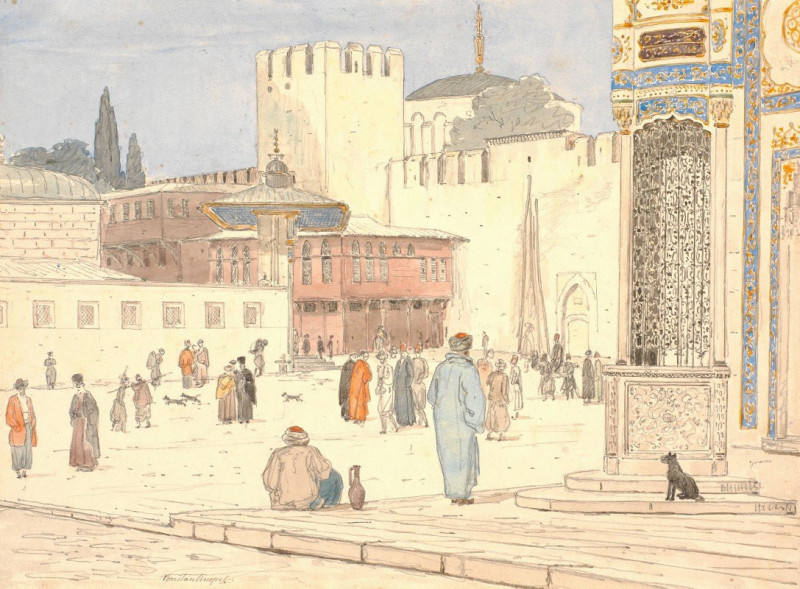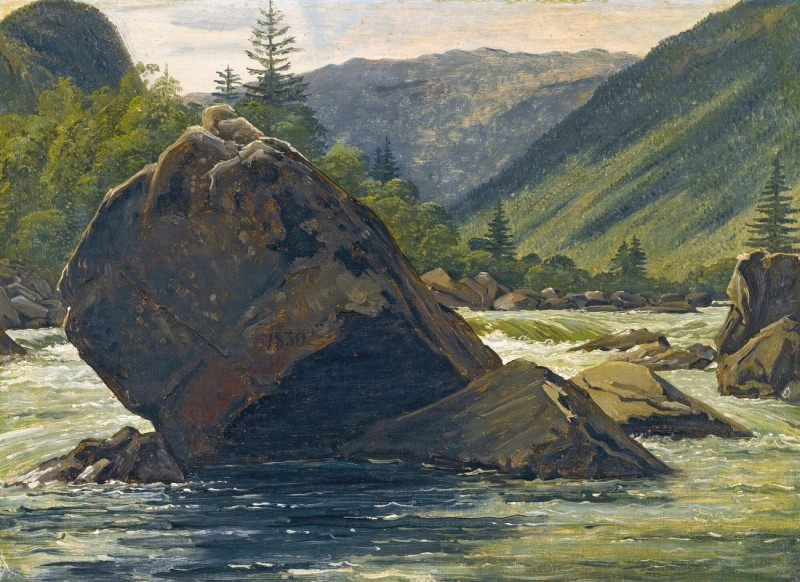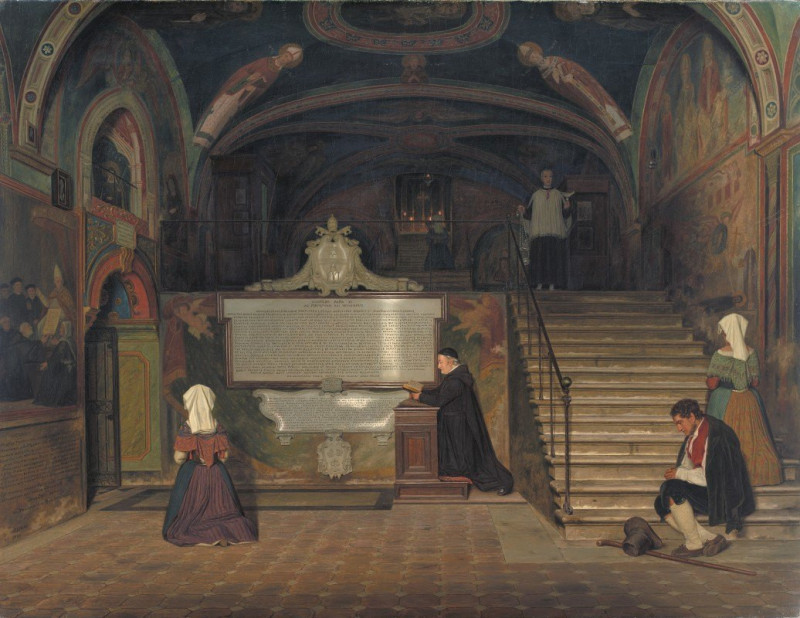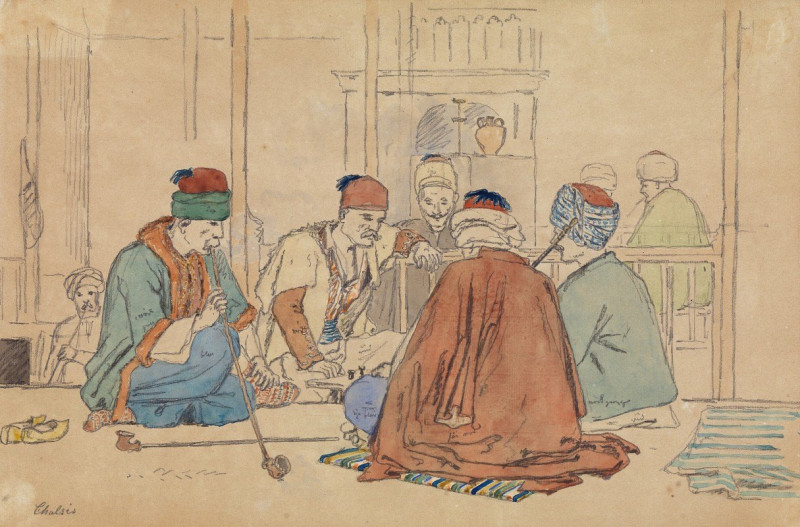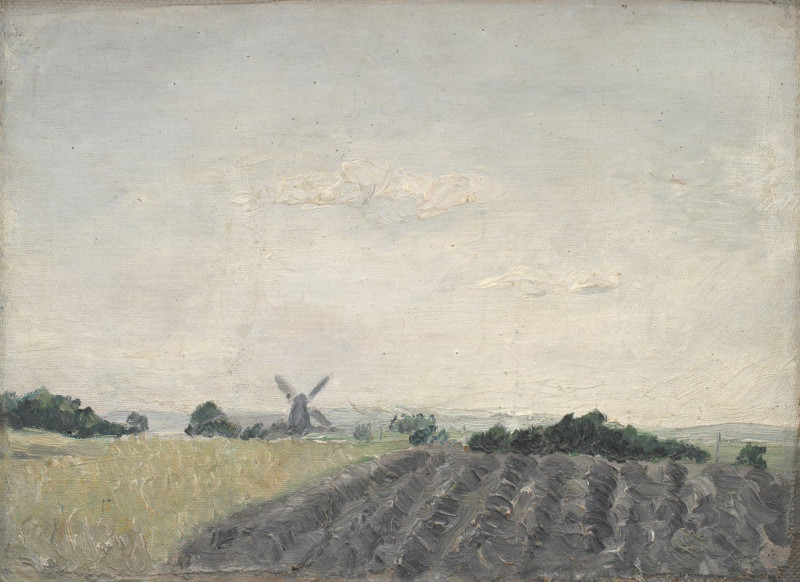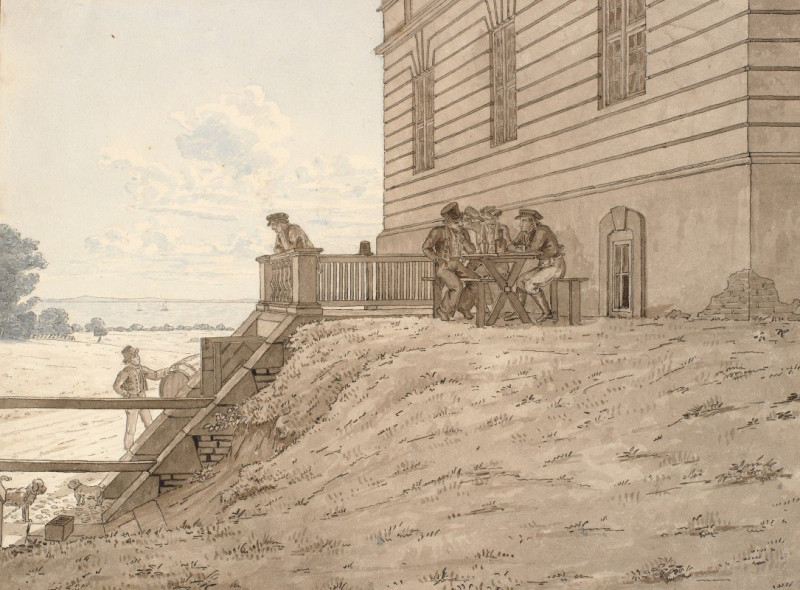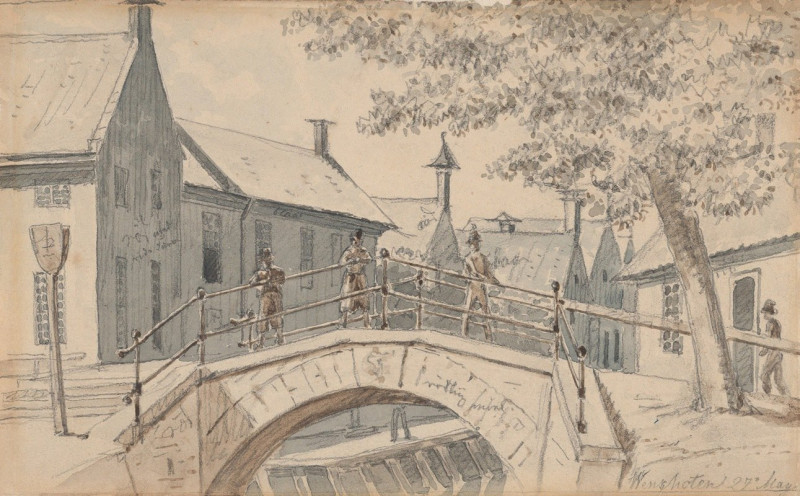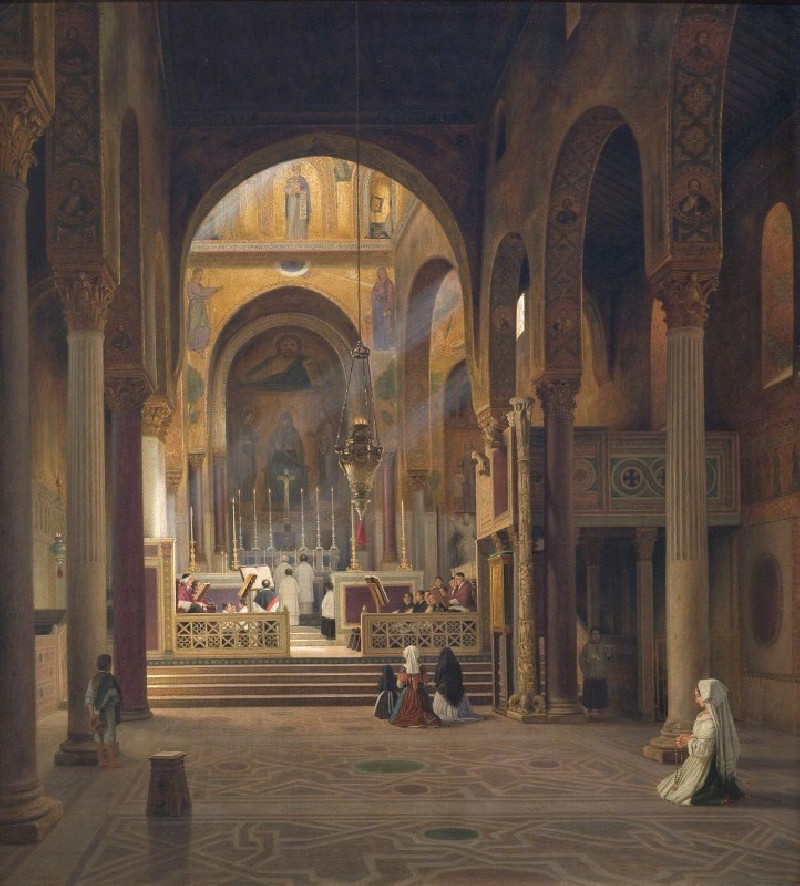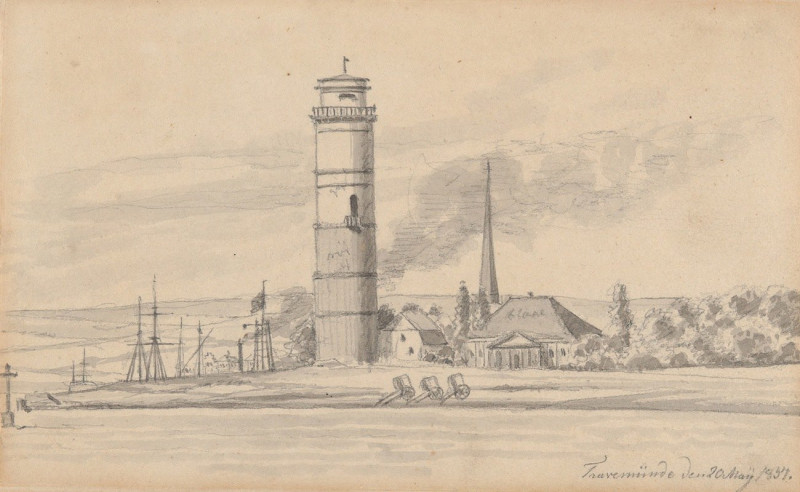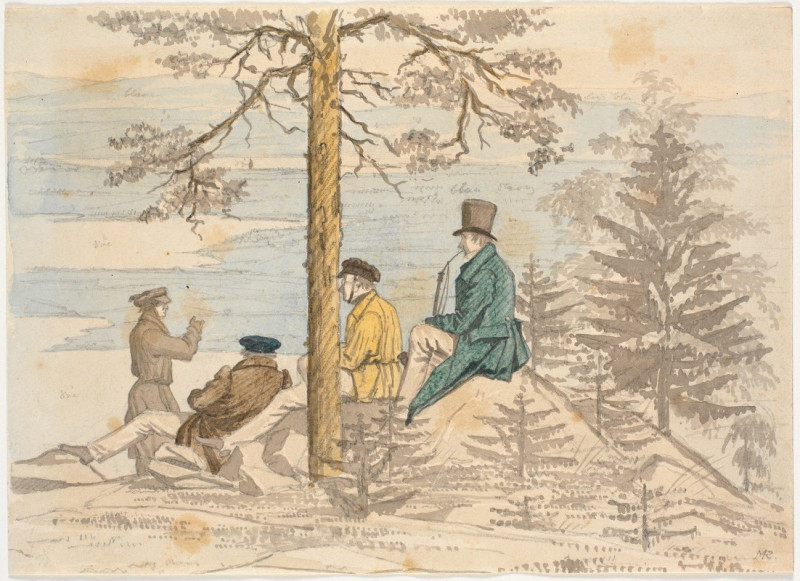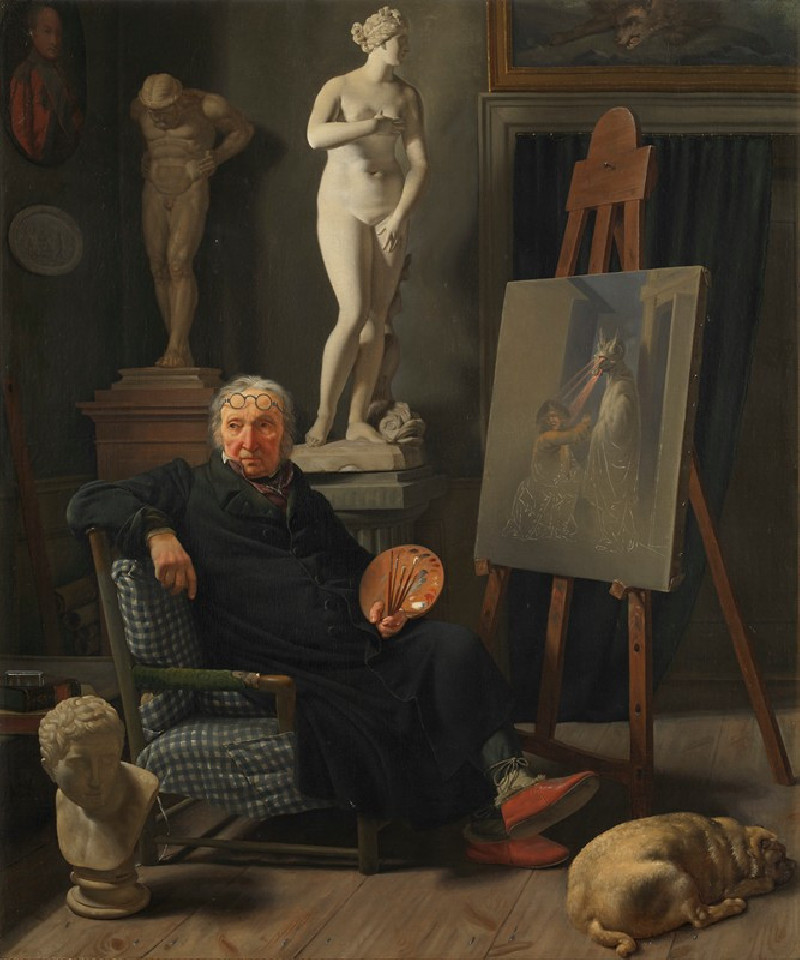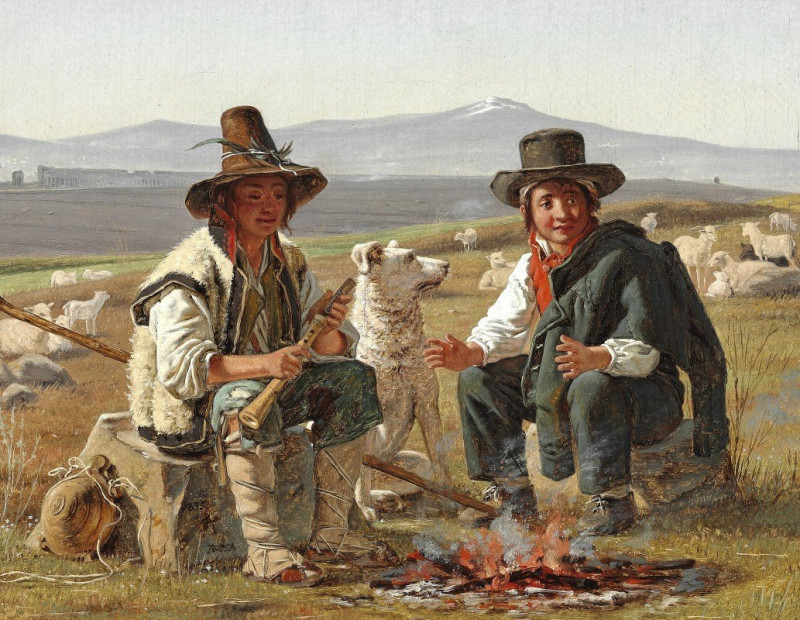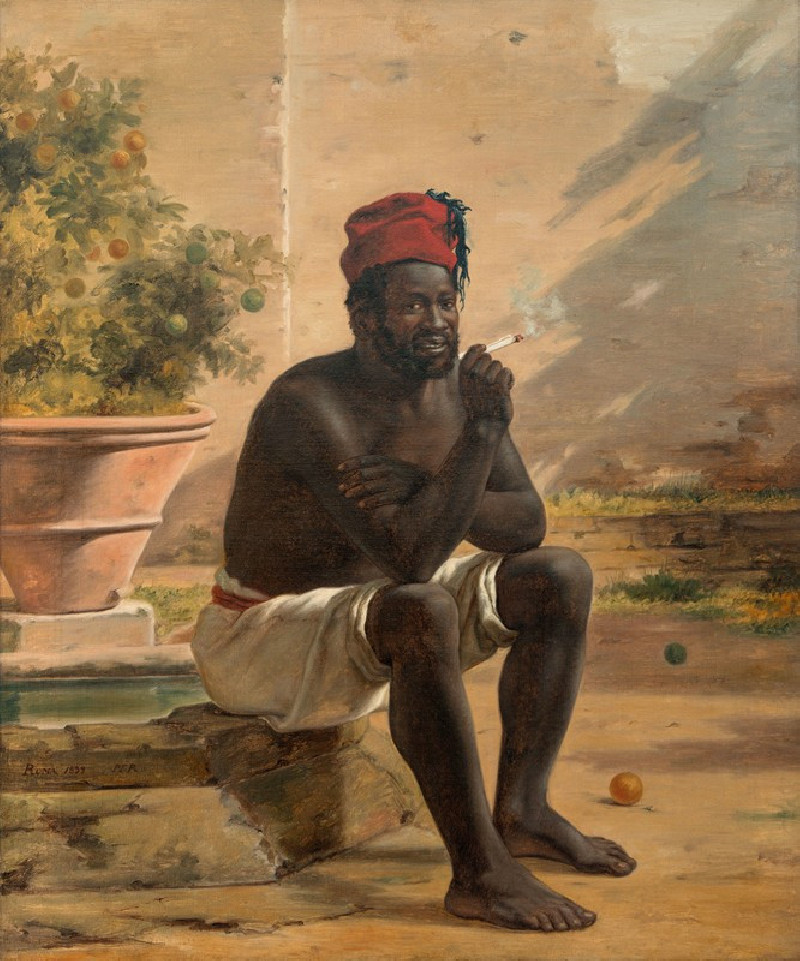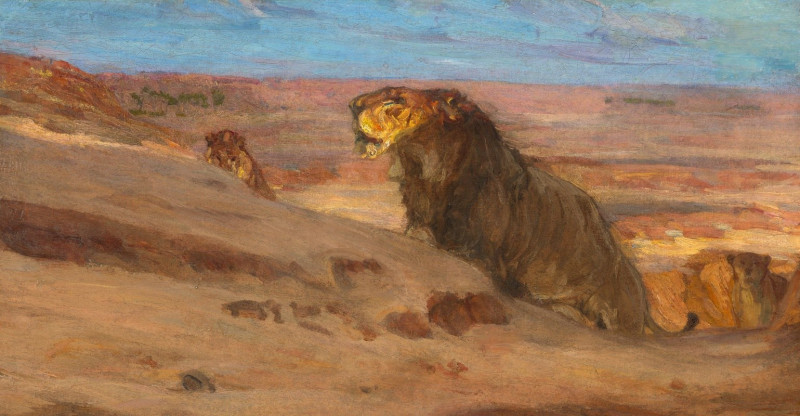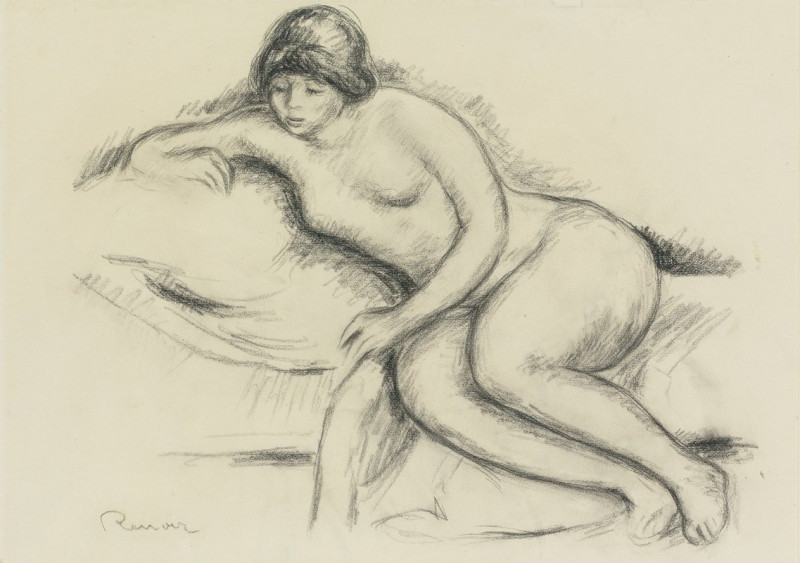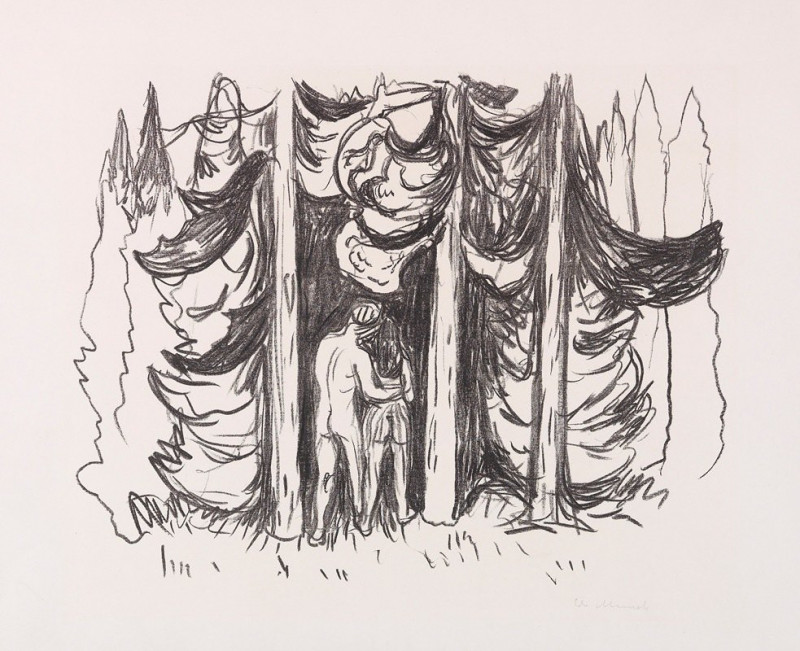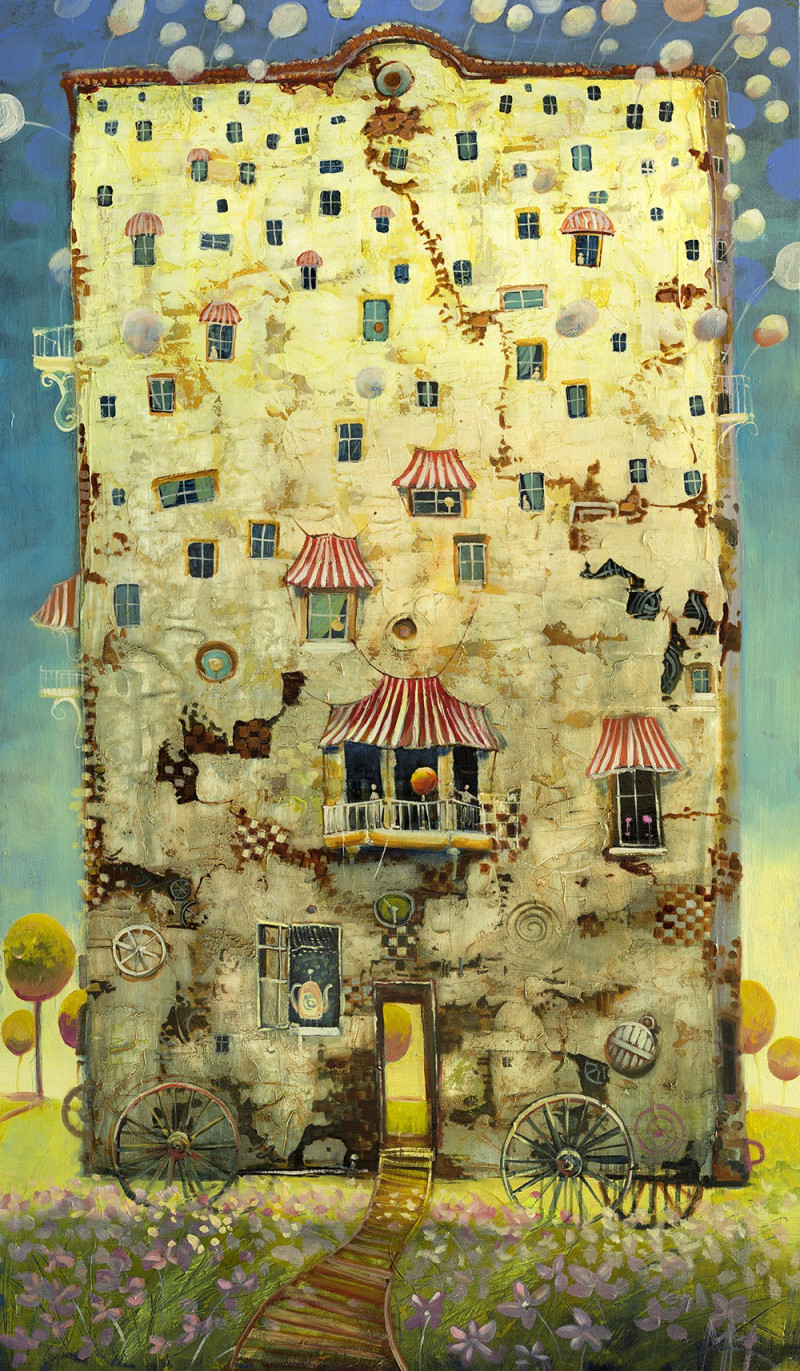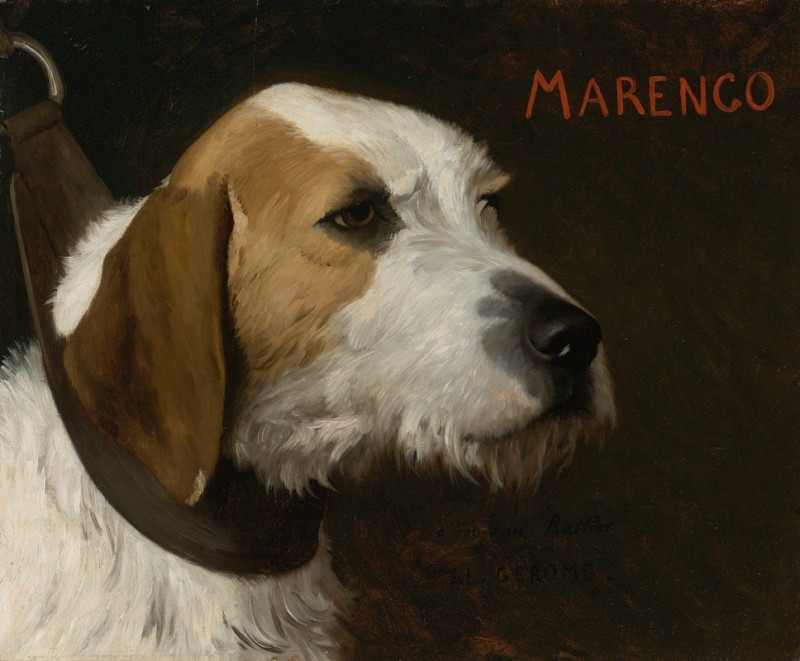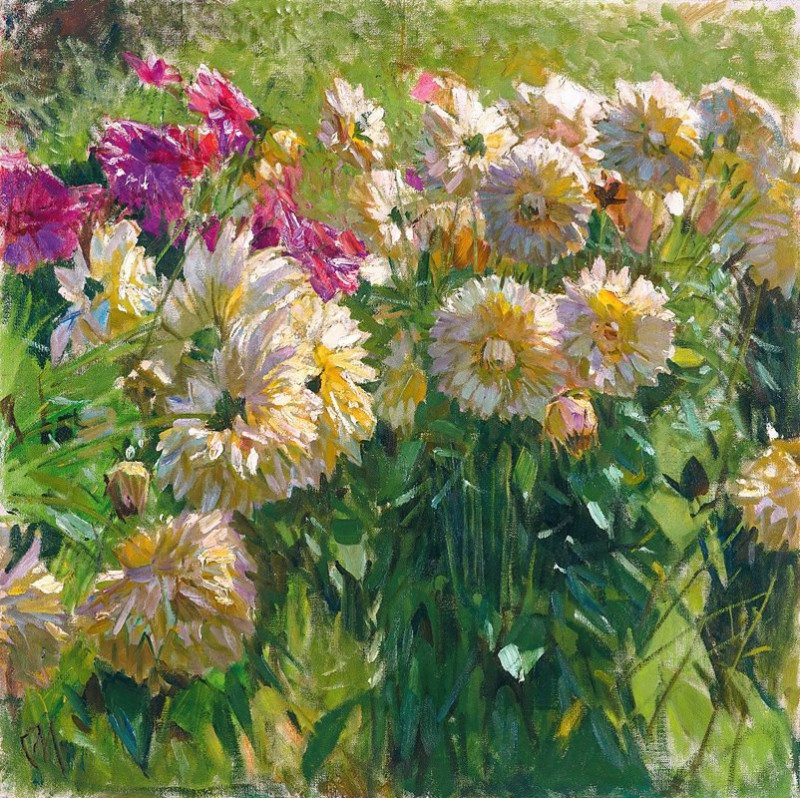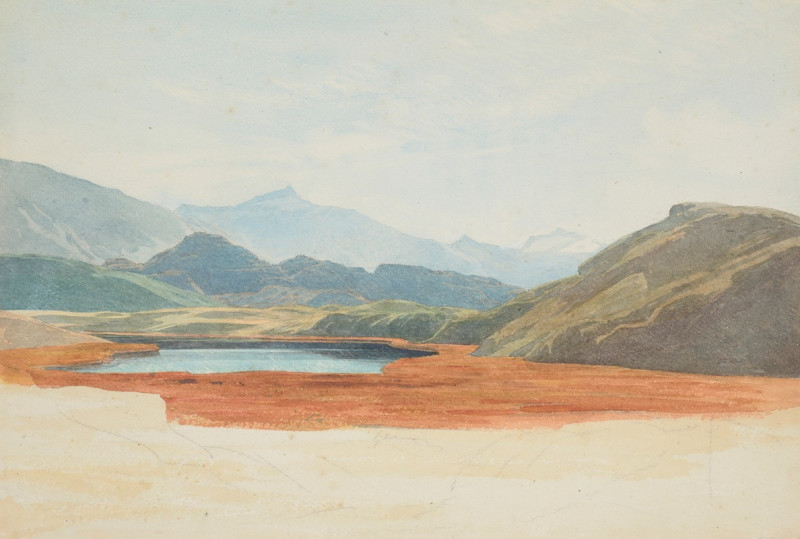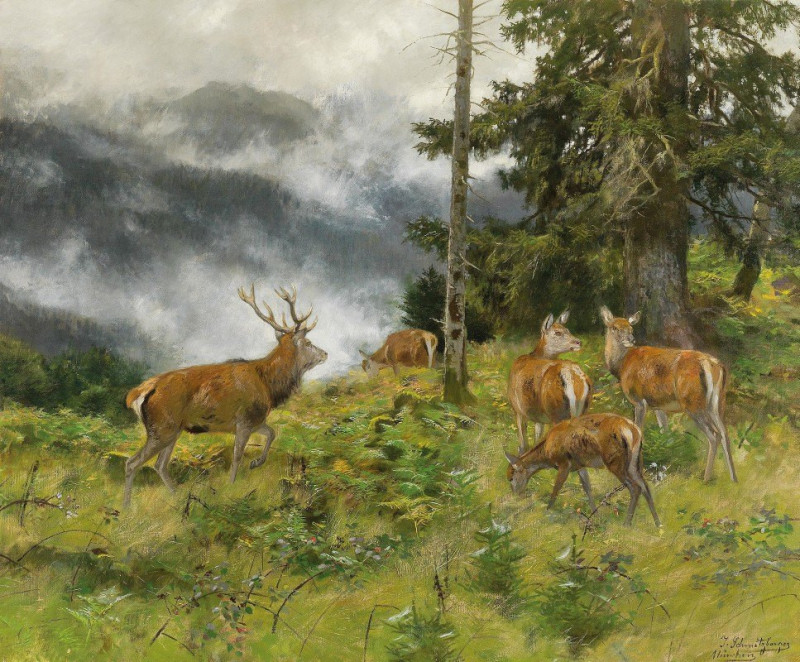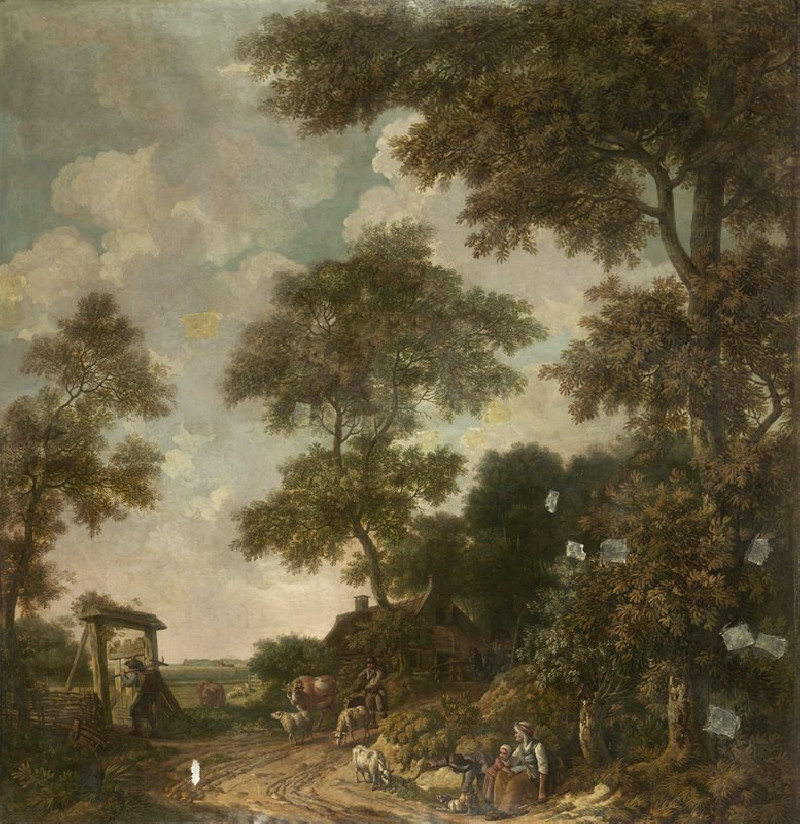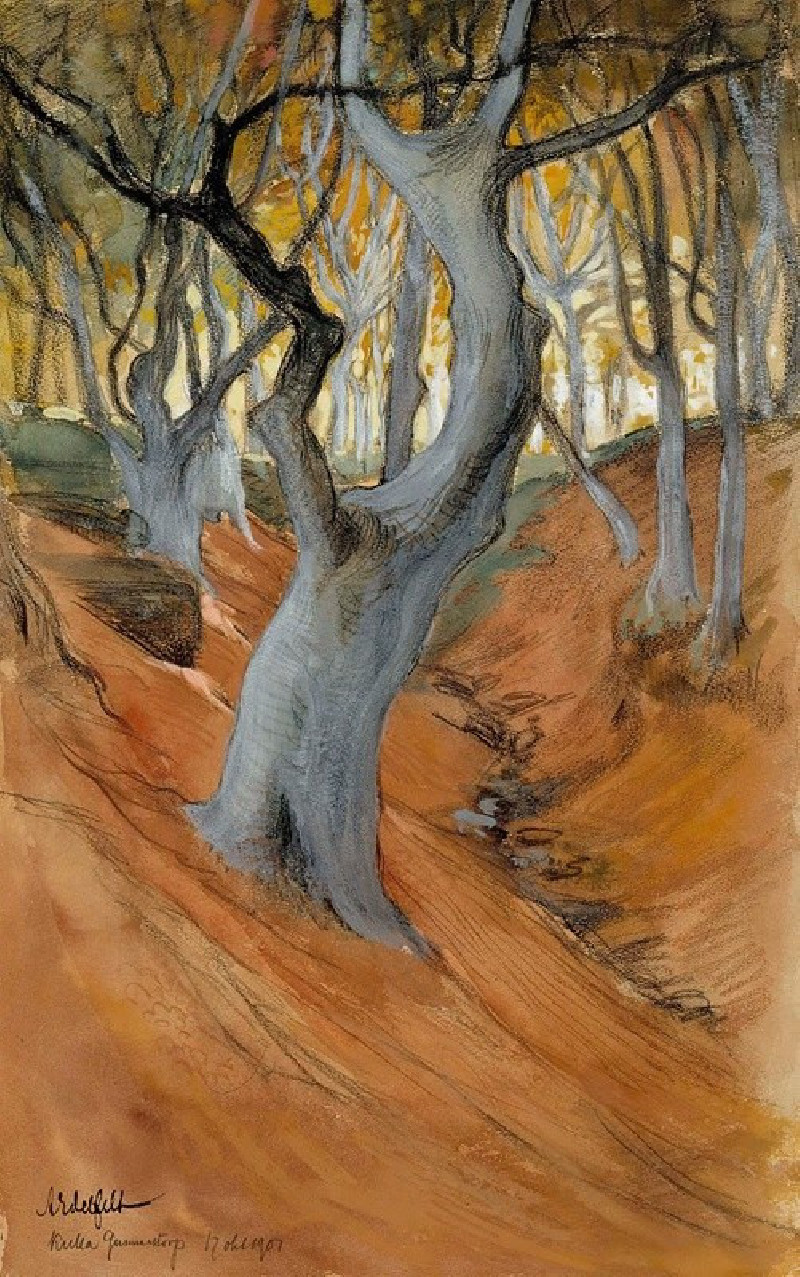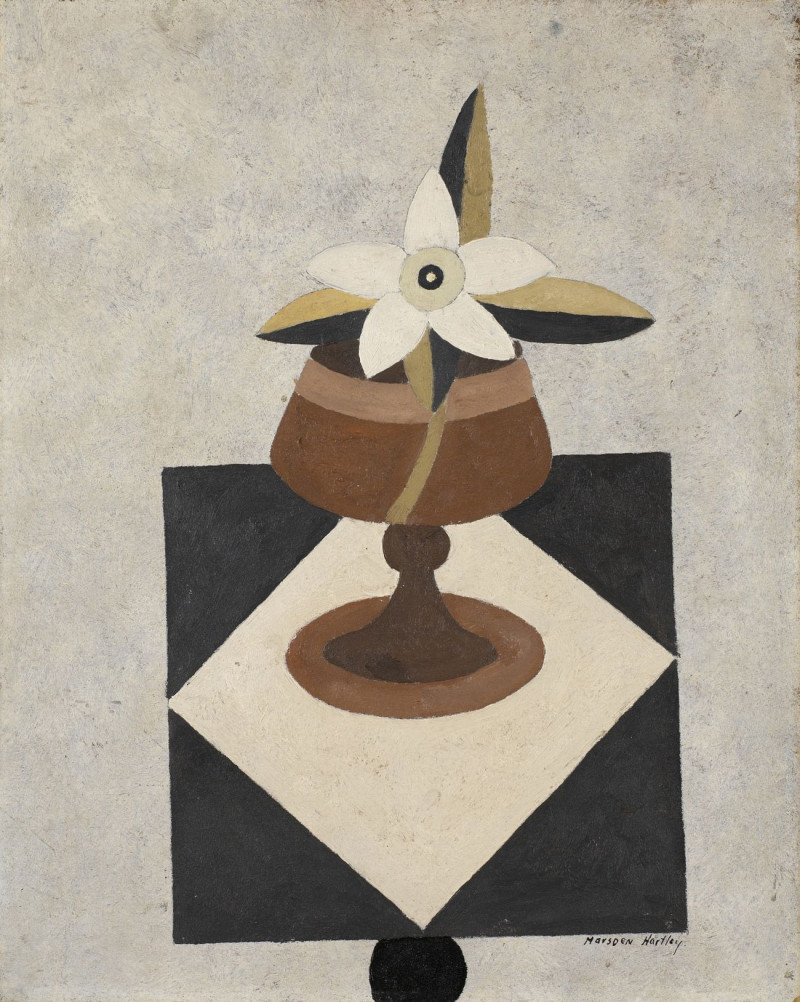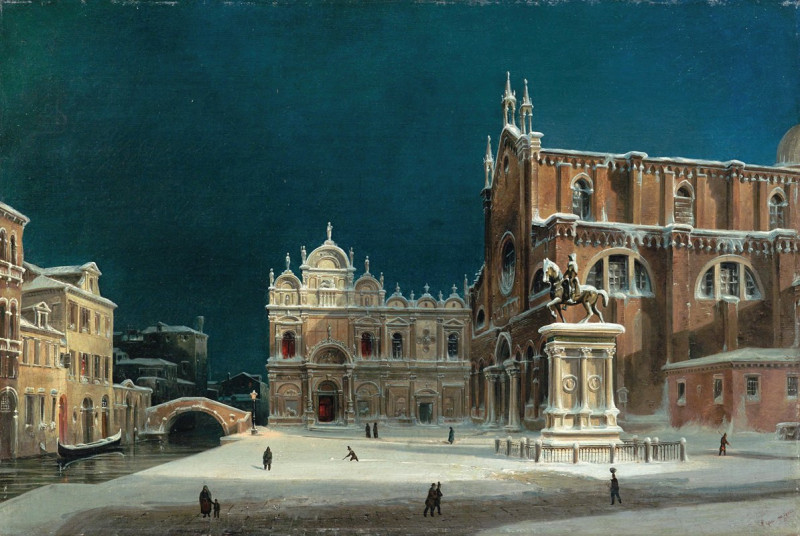View of the Square in Amalfi (1834 – 1835)
Technique: Giclée quality print
Recommended by our customers
More about this artwork
Martinus Rørbye's striking oil painting, "View of the Square in Amalfi" from 1834-1835, offers a captivating glimpse into the heart of this historic Italian town. Rørbye, a Danish artist noted for his travel sketches and paintings, captures the architectural and social vibrancy of Amalfi with meticulous detail and rich coloration.The painting draws the viewer's eye to the bustling square dominated by the grand façade of Amalfi's cathedral with its beautifully detailed bell tower and classical columns. The steps leading up to the cathedral are lively with townspeople and visitors, illustrating the central role of the church in daily life and community gatherings.In the foreground, a fountain adorned with a statue becomes a gathering point, surrounded by locals engaging in conversation and going about their daily routines. The detailed depiction of the clothing styles and the relaxed postures of the figures contribute to the painting's vivid portrayal of 19th-century Italian life.The backdrop features the rugged cliffs typical of the Amalfi coast, adding a dramatic natural element that contrasts with the architectural elegance of the town. The play of light and shadow, combined with the earthy tones of the buildings and the soft blue sky, enhances the overall serene atmosphere of the scene.Rørbye's "View of the Square in Amalfi" is not just a visual record; it is an invitation to experience the timeless charm of Amalfi, reflecting the artist’s exceptional ability to blend architectural precision with the lively essence of a place.
Delivery
Returns
Martinus Christian Wesseltoft Rørbye was a Danish painter, known both for genre works and landscapes. He was a central figure of the Golden Age of Danish painting during the first half of the 19th century.
The most traveled of the Danish Golden Age painters, he traveled both north to Norway and Sweden and south to Italy, Greece and Constantinople. He was also the first Danish painter to take to painting in Skagen at the northern top of Jutland, almost half a century before the thriving community of Skagen Painters formed and came to fame, through Michael Ancher, Anna Ancher and P.S. Krøyer.


